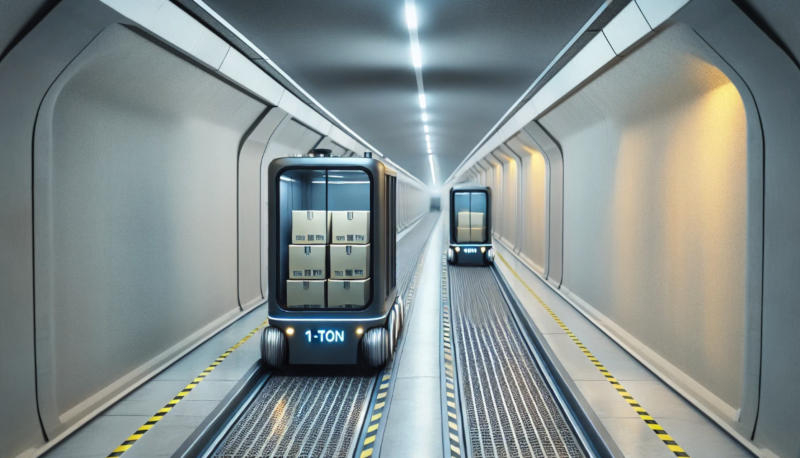Japanese authorities are planning to connect major cities with automated, zero-emission logistics lines that will be able to silently and efficiently transport millions of tons of cargo, and will also free the roads from tens of thousands of trucks.

Fonte da imagem: newatlas.com
The project has been under discussion by an expert group at Japan’s Ministry of Land, Infrastructure, Transport and Tourism since February, with an interim document published last week outlining plans to complete the first line between Tokyo and Osaka by 2034. The country’s population is shrinking, threatening serious labor force problems in the coming years. The project is designed to address one specific problem: online shopping is growing, while the number of drivers capable of transporting goods is shrinking – according to one likely scenario, by 2030, about 30% of goods will simply not make it from one point to another because there will be no one to transport them.

The first logistics line, which is planned to be built between Tokyo and Osaka, will be able to move as many small items as 25,000 trucks. How exactly this will be done has not yet been determined by the authors of the project, but the idea is that containers with a load capacity of up to a ton could move without human intervention from one end of the line to the other. This could be 500 km long conveyor belts between the two cities, running along the highway, or tunnels dug under the roads. Alternatively, it could be an infrastructure project of dedicated lines or tunnels along which automated electric trucks would go.

The 500-kilometer tunnel between the two cities appears to be the most expensive option, costing $23 billion without conveyor belts or self-driving trucks. Perhaps by 2034, when the line is scheduled to launch, this task will be solved by driverless trucks that will not require new infrastructure. But the ministry has already called on private companies to finance the project, which is expected to help overcome the logistics crisis and reduce greenhouse gas emissions.
